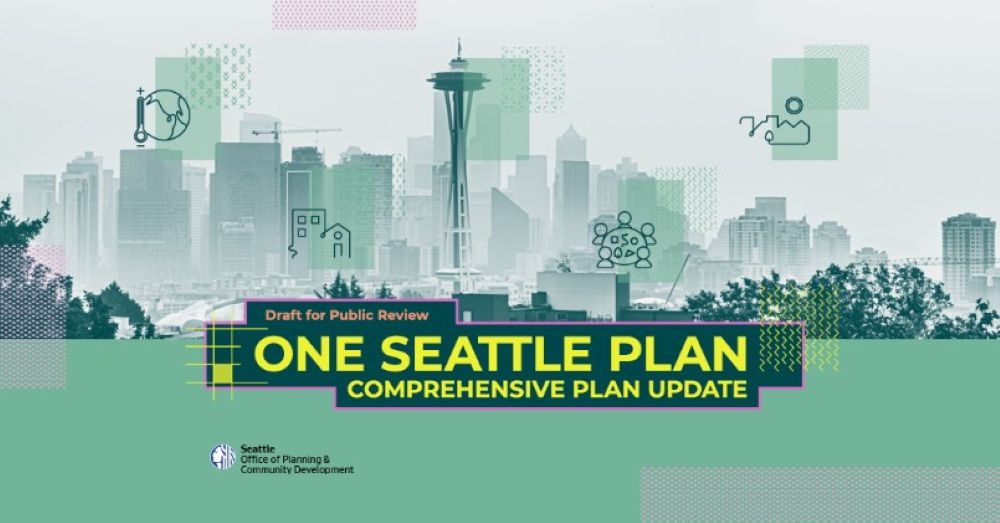If you are to believe right-wing talk radio, or relentless crime stories on Sinclair-owned KOMO, our freeways are filled with moving vans carrying belongings of those fleeing the hellhole that is Seattle. Downtown and Belltown are “train wrecks,” KTTX’s Jason Rantz tells us in a Facebook post.
The reality, of course, is far different. Just look at the city’s new skyline. Or streets of built-up Belltown or Dexter Avenue, unrecognizable from what they were just a few years ago. Judged by the 100,000 newbies of the past decade, we are a city surrounded by envy.
With gains, however, come pains. Two deficits are the city’s budget shortfall and political turbulence with one-term mayors. The challenges are summed up in a paper by ex-deputy mayor Tom Byers: “We are in the midst of a housing crisis. Climate change threatens hotter summers and worsening air quality. Gridlock clogs our streets and undermines economic vitality.”
The Seattle City Council is trying to chart direction with a draft One Seattle Plan. In a city where everyone gets consulted about everything, the council is faced with 100-plus proposed amendments. Seattle is dying? No, it lives for process.
Some city influencers have sketched out a proposal to dust off and upgrade a plan, drawn up by the Olmsted Brothers early in the 20th century, envisioning a system of parks and tree-lined boulevards. These would link the “urban villages” envisioned in a 1994 blueprint for complying with the state’s Growth Management Act.
Instead of sprawl or piling people on top of each other, we ought to look at this alternative. Make use of so-called gray zones, underutilized or vacant property, some of it in public ownership. And naturally, allow neighborhoods in on the process. In the words of former city parks director Holly Miller, a leader in this charge for change: “The challenge is, how do we talk about this without sounding NIMBY?” Urbanists are sure to be wary, and The Stranger is certain to cry class warfare.
I cite both the potential and perils of growth with an example of Granville Street, up in Vancouver, B.C., a sublime tree-lined arterial into the heart of downtown. At 33rd and Granville, however, one finds a monster house extending almost to the sidewalk, leaving no room for trees. Similarly, Byers speaks of transforming our grungiest arterial: “Imagine Aurora Avenue as a tree-lined boulevard with housing and businesses clustered around bus rapid transit stops.”
As one who has walked tree-shaded streets of Madrona, I appreciate this concept. Urban villages can balance and protect small businesses, transit hubs, and islands of greenery. An example is Al Larkins Park in Madrona. In addition, my neighbors have banded together to bat away periodic bids by Metro to mess around with a No. 2 bus route that takes us to Pill Hill hospitals, downtown, Belltown, and West Queen Anne. On that route, I could commute to the office of Seattle PI.com, before Hearst took it away.
The first key to such a plan is trees that we plant and protect. Trees sequester carbon and supply much-needed shade, especially in summer. Face it: the climate here IS changing, even though a newspaper pal has fled from a scorching Phoenix for our more mellow climate. Of late, however, we’ve experienced drought summers, smoke, and disappearance of the low pressure area that would strike us around Labor Day.
The second key is to involve neighborhoods from the get-go, in identifying gray areas and green spaces. Bureaucrats and bosses often have big, bad ideas, such as Robert Moses’ Cross-Bronx Expressway in New York or the University of Illinois Chicago Circle campus, created by Mayor Richard J. Daley at the expense of an historic Italian-American neighborhood.
Moses was stopped from plowing a freeway through Greenwich Village, as our neighborhoods fought off the Bay Freeway in South Lake Union and the R.H. Thomson Expressway, ploughing through the Arboretum. Similarly in Portland, a splendid riverfront park and walkway was once a planned highway.
Disruption of neighborhoods leads to long, draining battles, with legitimate objections that should not be bulldozed. For example, Byers writes: “MLK could become a magnificent transit gateway, reaching all the way from Rainier Beach to the city center.” With light rail, however, have come fears of gentrification and affordability. Are communities of color being pushed out of the city?
In the Northwest, we dream big dreams. There have been setbacks, such as a city transportation department that creates confusion and congestion. But from Discovery Park to a Viaduct-free waterfront, we’ve put our best face forward, at least to passengers arriving or departing on cruise ships.
Who says we can’t accomplish a future that balances growth, greenery, and getting around? It’s time to get juiced about planning the future.
This article also appears in Cascadia Advocate.
Discover more from Post Alley
Subscribe to get the latest posts sent to your email.

Again, thankyou Joel Connelly. Excellent writing and balanced reporting.
Any chance of an article urging universities to band together to resist federal interference? The recent Oregon, washington, California alliance for vaccinations gives one hope that more collaboration might well be possible.
Great column, again, Joel. Do you have a link to the “city influencers… sketched out a proposal”? It sounds fantastic.
It would be interesting to see some details, if there are any.
SDOT’s tree people make a valiant effort to establish tree lined streets, and do a good job of it, but they could probably do more with some help. Aside from a budget boost, they might be given authority over competing uses for the existing “tree pit” openings in the sidewalk. In Madrona, for example they”re responsible for the red maples around Madrona Elementary.
But Holly Miller put her finger on it. The neighborhood collaborative approach from the Diers era is anathema now, and the greenery we appreciate is the color of US currency.